The skyline of Central London, with its ever-evolving collection of skyscrapers and hyper-modern buildings, makes one wonder more about its coming future than its ancient past. While following an itinerary through the earliest foundations of the city, however, the focus happens to fall on what lies beneath, rather than what’s on the skyline.
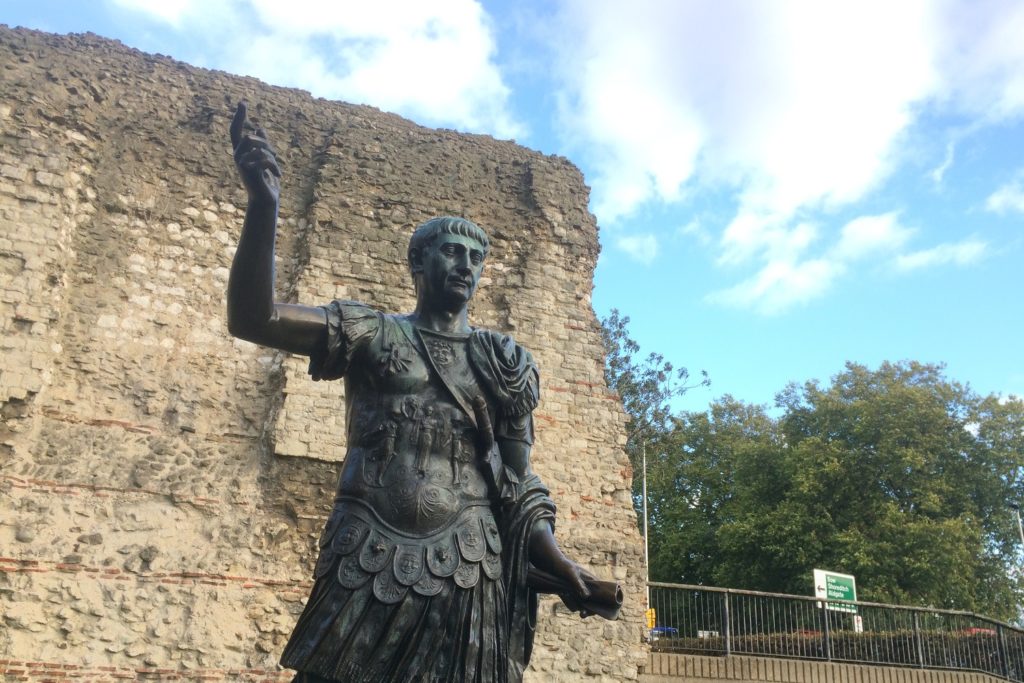
Tower Hill city wall and the statue of Trajan (Photo: Andrea Gambaro)
Despite having walked Cannon Street many times before, I had never paid attention to the gentle slopes of the ancient valley dug out by the Walbrook River. Now buried, the river divided the Roman settlement that gave birth to the city in two, making it fair to conclude that London always had its East and its West End.
I walked along the route of the Walbrook in search of its confluence with the River Thames, the only spot where its waters still flow uncovered. It was a rather nerdy hunt, I’ll admit, but looking for hidden traces of London’s furthermost past was the whole purpose of my day trip.
Roman stones and modern buildings
There was another reason why I started my tour there. On the east bank of the Walbrook the Romans built the temple of Mithras, who was originally a Persian god secretly worshipped by soldiers all over the empire. When it was unearthed in 1954, despite the great interest it sparked among Londoners, the temple had to be moved quickly to Queen Victoria Street nearby due to ongoing construction works, and there it stood half-neglected for decades. It was only recently that the Mithraeum was brought back to life, as part of the project for Bloomberg’s new European headquarters.
I couldn’t visit the temple that day (it would launch a few weeks later), so I made do with a walk around the complex that housed it: a hard-not-to-notice outpost of corporate power promising to “fuel innovation”, encourage “a new level of productivity”, “define a new generation of 21st century office design”, and offer an “innovative museum experience that will change the way we encounter archaeology”.
As I admired the building’s cutting-edge design, smoothly blending square and round shapes, there was something odd about the idea of ancient architecture being included in such a boldly-futuristic project. Like an abrupt translation from past into present, where something is likely to get lost in the process.
Much like a mediator between the two extremes of London’s history, the Martian-like bronze facade I was looking at reflected the bell tower of St. Stephen Walbrook. The medieval church’s first incarnation is believed to have been built on the site of the Mithraeum after the Romans left Britain. The church overlooking the building that rose above its early foundations was an unexpected composition, bringing together three eras otherwise separated in time.
I went back to Cannon Street to check if the London Stone was still safe (so long as it is, the saying goes, London shall continue to flourish). Its origins are uncertain, but at least two theories link it to the Romans, either as a milestone or as part of a governor’s palace. It took me a while to realise I was strolling up and down in vain: 111 Cannon Street, where the stone used to be kept, had been demolished to make space for the next ground-breaking construction project to shape the skyline of the City. I presumed the stone must have been safe in a temporary location, given this continued proof of London’s flourishing.
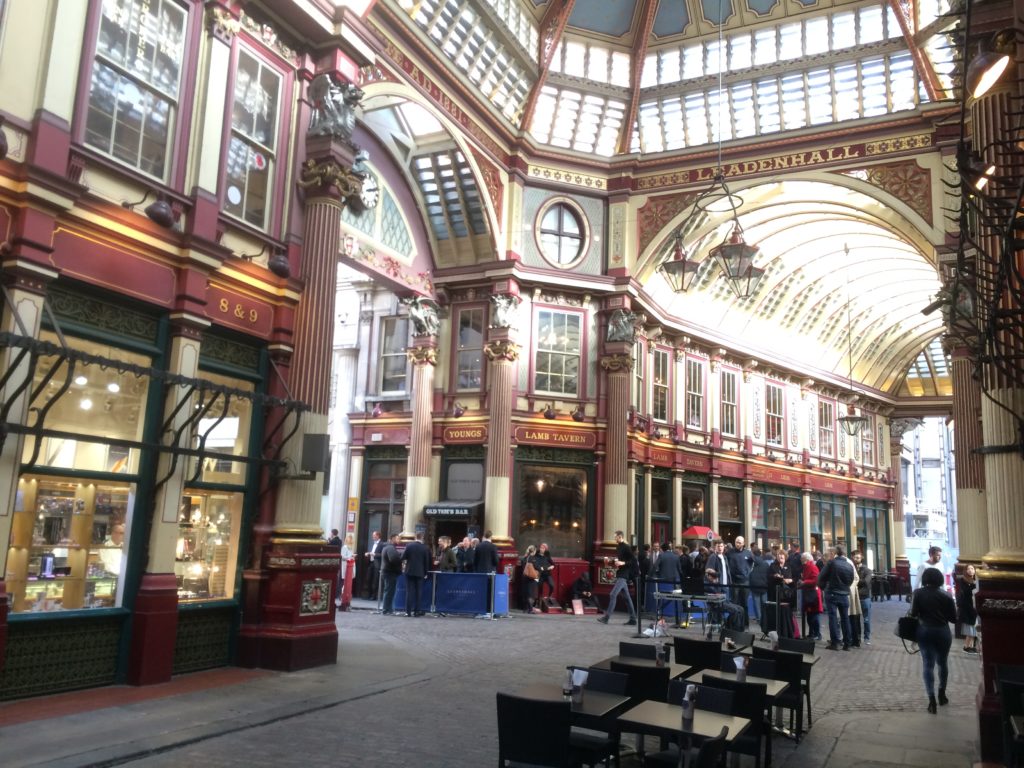
Leadenhall Market, in Roman times home to a forum and basilica (Photo: Andrea Gambaro)
Tracking down Londinium
I reached Monument and sought St. Magnus the Martyr Church, which stands where the first Roman bridge was. The porch displayed an ancient piece of timber taken either from a wharf or from the bridge itself. It was this crossing over the Thames, a mere 60 meters downstream from the current London Bridge, which encouraged the first settlement here, named Londinium, around AD 43.
Even more surprising was being able to trace the original layout of London, still shaping the city after 2,000 years: I walked up Fish Hill Street, paved over what is thought to have been the very first street in Londinium, and headed for Leadenhall Market, which was already a marketplace in Roman times.
Ten minutes later, in the crypt of All Hallows by the Tower Church, this ancient urban plan appeared even more evident in a detailed model of the settlement. It showed the forum, the early London Bridge, the amphitheatre, the fort on the north-west corner, and the walls bordering the square-mile that is today known as The City. Naturally, the Thames was the least changed of the area’s features, making the map look all the more familiar. I retraced the route I had covered until then, and joined two other visitors in matching each landmark with its current counterpart.
The crypt also displayed a tessellated floor dating back to the second century, still lying at its ancient level. Buried several meters underground and half-hidden in the darkness of the room, that worn-out section of a Roman domestic house revealed its value only in light of the many centuries weighing on it. In a city often known for its frenetic pace, where time is deemed little more than a concern, such enduring records of history struck me as even more significant.
But not all that is ancient must hide underground. As I reached the eastern border of Londinium, the best-preserved section of the city walls still stood over ten meters high. The lower section of the ramparts showed typical Roman features, such as squared stone blocks and regular rows of red tiles.
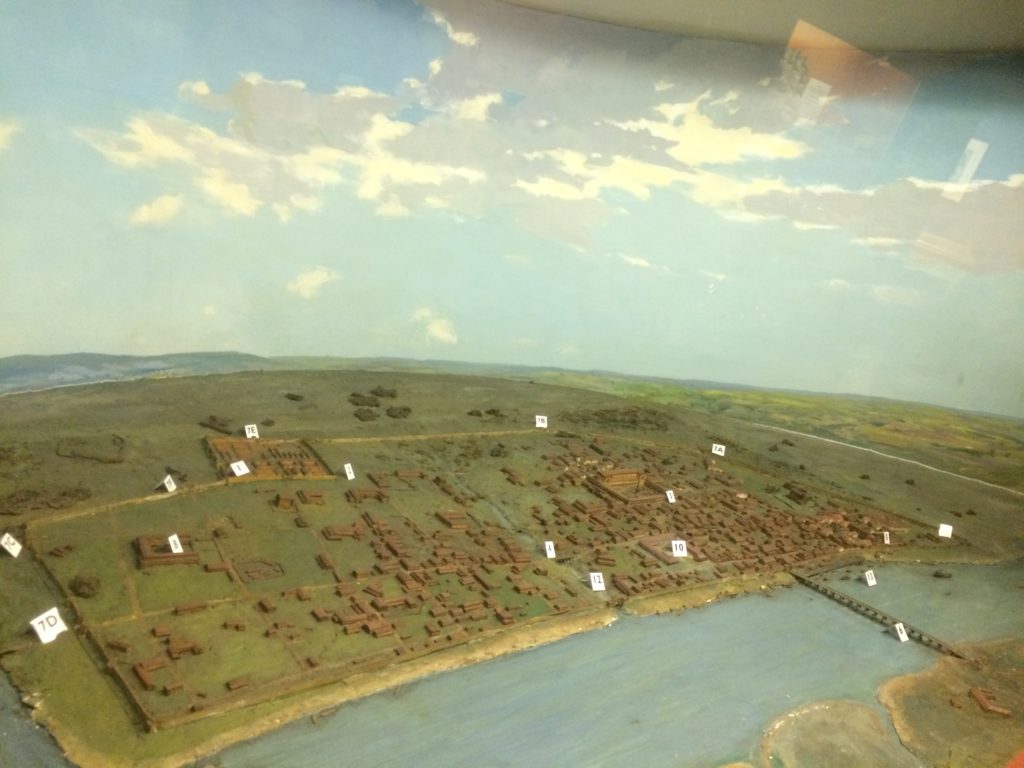
The model of Londinium on display at St. Magnus the Martyr Church (Photo: Andrea Gambaro)
The gladiators’ arena
My next stop was the Roman Amphitheatre, lying underneath the Guildhall Art Gallery. The elegant yard of the Guildhall was busy with dancers perfecting their movements and testing their synchrony. They were rehearsing for a Roman-themed performance that would take place later that evening, as part of a series of events organised to celebrate the restoration of the Mithraeum.
I entered the gallery, walked down the stairs, and browsed the collection of paintings illustrating London’s history. One level down, the east entrance of the amphitheatre’s ruins were ensconced in a dark, quiet and spacious room.
Atmospheric sound effects accompanied me and a few other visitors through the stone blocks, until my attention was drawn to a broken skull in a display case. There was no way to establish with certainty that it had belonged to a gladiator, but its noticeable head injury might well have been inflicted during a deadly fight in the arena. Whether that was true or not, the surroundings were suggestive enough for me to decide to come back later and see the show.
The last part of the itinerary included the area once enclosed within the Roman fort. I proceeded along its perimeter guided by its surviving parts, and ended up facing the ponds and brutalist buildings of the Barbican Estate. Just like at the beginning of my tour, the contrast between ancient and modern proved more dramatic in London than any other archaeological site I have visited.
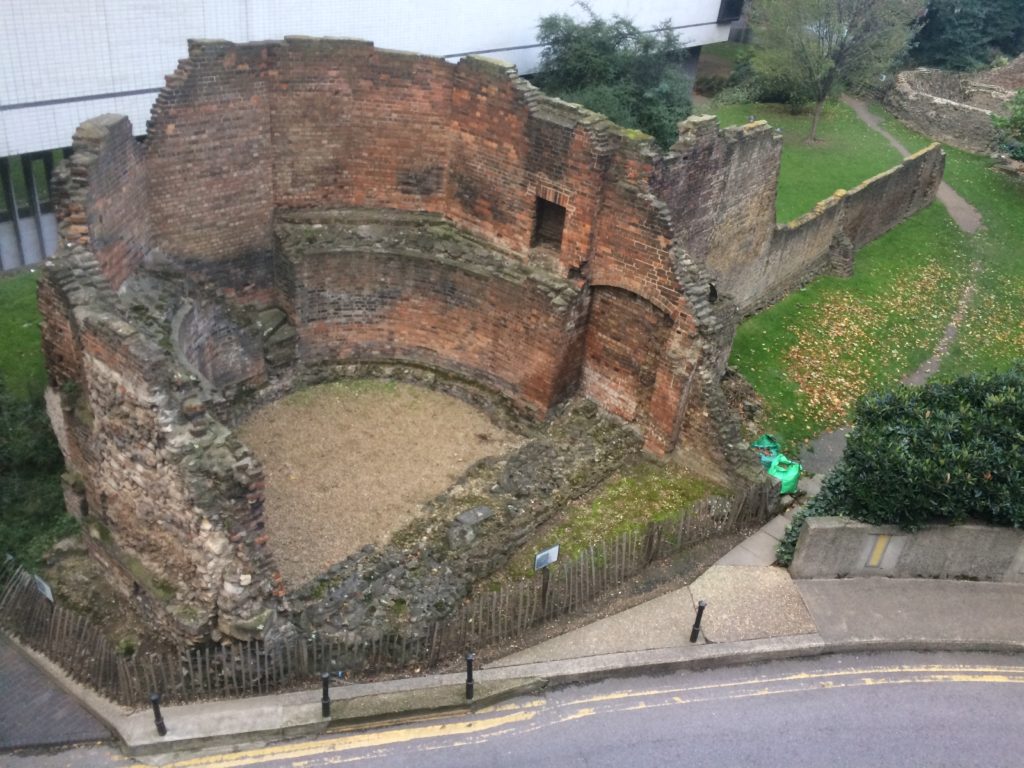
The Roman fort gate, next to the Museum of London (Photo: Andrea Gambaro)
An echo from the past
It was almost dark when I went back to the Guildhall. The flyer I was handed made me curious: “A series of provocative scenes that both reveal the horror of the arena and celebrate the perseverance of the gladiatorial spirit.” Then the performance started.
The surrounding facades burned with projected flames, and triumphant music announced the entrance of the gladiators. But I couldn’t stay hooked on the show for long. The music, gestures, and visuals that followed were either too unrelated to the Romans or made predictable references to that era. After an afternoon spent diving into the imagery and mystery of an ancient world, the digital-powered performance felt like an unwanted push out of it.
Towards the end of the show I approached the entrance of the gallery looking for a toilet. The security guard wasn’t quite sure if I could enter, but eventually let me in. Nobody else was inside. I walked down the stairs and found myself looking again at the amphitheatre from the glass window above it. In dim light and without visitors, it was easy to picture the curved bleachers that once stood at the far end, overlooking the arena. The skull was still there, still proposing a sequence of events that unfolded before that fatal blow hit. Distant, enthusiastic cheering feebly resounded. Up in the yard, the show had just ended.
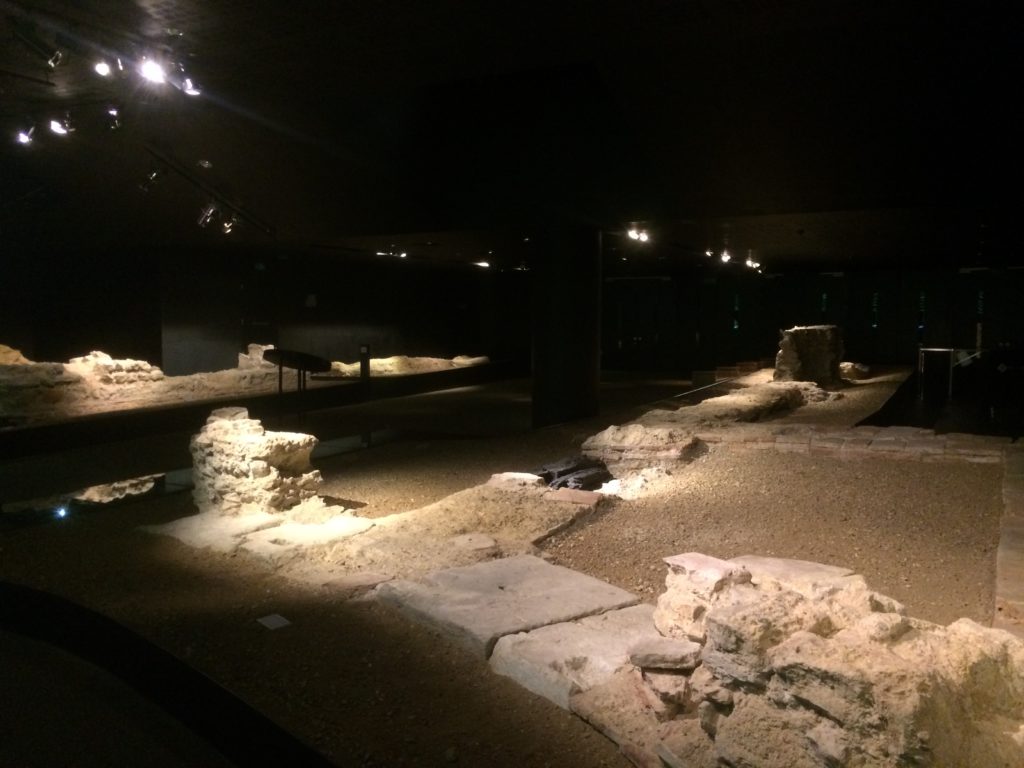
The amphitheatre discovered during redevelopment of Guildhall Art Gallery (Photo: Andrea Gambaro)
Roads to Rome is a self-guided walking tour curated by the City of London. It ends at the Museum of London, which offers a thorough account of London’s Roman history. Now opened to the public, the London Mithraeum is free to visit and requires prior booking.